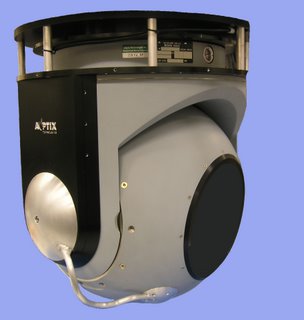
Posted by Courtney E. Howard
Now that I am all settled in at my new office in Liberty Lake, Wa., having made the trek from the Military & Aerospace Electronics home base in southern N.H., I am looking to get out and visit with area businesses in the military and aerospace market. I am in the perfect place to do so, in fact.
Technology firms, prime contractors, subcontractors, systems integrators, and military organizations and bases abound in this area. Defense and, particularly, aerospace technologies, solutions, deployments, and programs constitute a major part of the state's economy.
If you're not familiar, Liberty Lake is located in eastern Washington, and it is where companies such as SprayCool (also known as ISR or Isothermal Systems Research) are situated. It is also the former locale of General Dynamics-Itronix, which moved just miles away to Spokane Valley.
Now that I am all settled in at my new office in Liberty Lake, Wa., having made the trek from the Military & Aerospace Electronics home base in southern N.H., I am looking to get out and visit with area businesses in the military and aerospace market. I am in the perfect place to do so, in fact.
Technology firms, prime contractors, subcontractors, systems integrators, and military organizations and bases abound in this area. Defense and, particularly, aerospace technologies, solutions, deployments, and programs constitute a major part of the state's economy.
If you're not familiar, Liberty Lake is located in eastern Washington, and it is where companies such as SprayCool (also known as ISR or Isothermal Systems Research) are situated. It is also the former locale of General Dynamics-Itronix, which moved just miles away to Spokane Valley.
Liberty Lake is just a short drive from Spokane, where Fairchild Air Force Base resides (see photo at right), as well as a brief jaunt to Seattle, Portland, Ore.; Vancouver, British Colombia; and virtually all of Idaho. I am a short drive to these locales, and a brief flight from points north (Canada...), south (California...), and Midwest (Colorado, Arizona...)--and everything in between.
In short, I am an active member of the Washington mil-aero market and business community and I invite you to drop me a line or give me a call. Update me on your technologies and products, programs and contract awards, and more. Invite me to tour your facility, interview your executives and program managers, and witness your systems, solutions, and innovations first hand.
I am Military & Aerospace Electronics West Coast-based roving reporter, and I am always looking for the latest market news. If you have something to say, post a comment or email me at Courtney@pennwell.com.
In short, I am an active member of the Washington mil-aero market and business community and I invite you to drop me a line or give me a call. Update me on your technologies and products, programs and contract awards, and more. Invite me to tour your facility, interview your executives and program managers, and witness your systems, solutions, and innovations first hand.
I am Military & Aerospace Electronics West Coast-based roving reporter, and I am always looking for the latest market news. If you have something to say, post a comment or email me at Courtney@pennwell.com.







